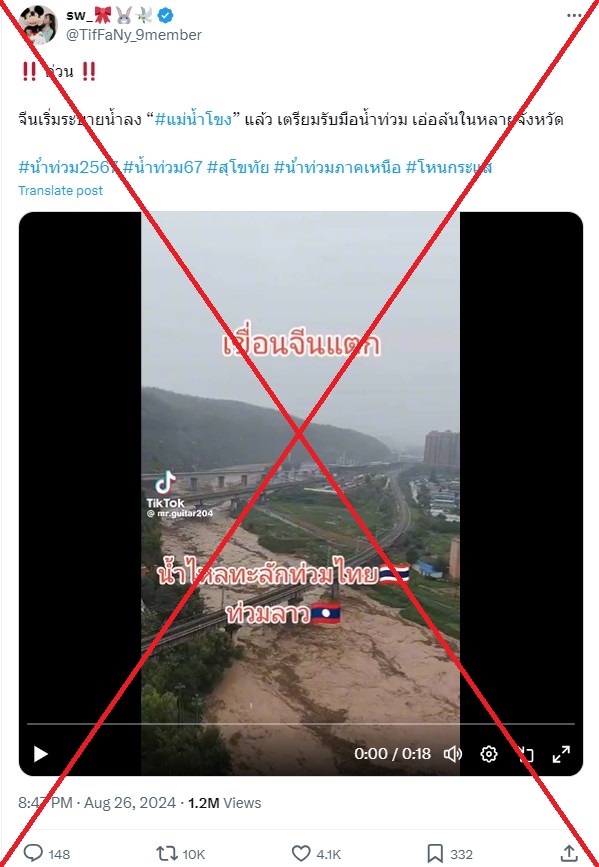The video circulated online after flash floods caused by heavy monsoon rains in Thailand And Laos end of August 2024 (archived links) here And here).
Thailand Ministry of Health said at least 30 people had been killed (archived link).
Similar reports were also shared claiming that China had caused floods in Thailand here And hereas well as in Japanese messages here And hereand in Chinese here.
The Mekong River flows through several countries, including southwest China, Thailand and Laos. However, the video circulating online shows another river in northern China, which had already burst its banks a few weeks earlier.
Flooding of the Luo River
A reverse search on Google using keyframes from the fake shared video led to the the same images in a compilation posted on content aggregator NetEase (archived link).
The caption in simplified Chinese shows flooding near Yan’an, in northern China’s Shaanxi province, on August 9.
AFP located the clip on a bridge over the Luo River in the province Ganquan District (archived link).
Below are screenshots of the mistakenly shared video (left) and Google Earth images of Ganquan County (right), with corresponding elements highlighted by AFP:
According to the Chinese state broadcaster CCTV surveillanceThe flooding, caused by rainfall between August 6 and 9, was the worst the Luo River had seen since 1994. (archived link).
Separate water basins
Piano porn Deetescountry director for Thailand and Myanmar at the NGO International Rivers, told AFP that the Luo River is not connected to the Mekong River basin.
“It’s a completely separate pool,” she said.
The Mekong Dam Monitor Project website maps the route of the Mekong River from southwestern China to Laos and Thailand (archived link).
Below is a screenshot of an image on the Mekong Dam Monitor website, with the location where the mistakenly shared video was filmed, highlighted by AFP:
There are also no official reports of a dam burst in China in August 2024.
Ormbun Thipsuna, a leader of the Northeast Community Network in seven provinces of the Mekong River Basin (ComNet Mekong), told AFP on September 9: “The last dam burst in China was in July and did not affect the Mekong River” (archived link).
The claim was previously debunked by the Thai government-run Anti-fake news centerstating that there were “no news reports at all about a Chinese dam bursting” (archived link).
AFP debunked a similar claim about flooding in Thailand caused by a Chinese dam bursting here.







